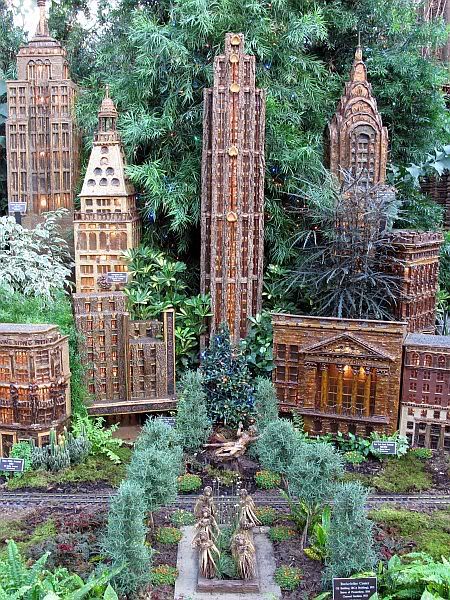
The star of this New York holiday favorite may seem like the model railway trains chugging through a glass house but children also get to experience the architecture of New York, past and present. Children are inspired by handmade art that is created from plant materials such as bark, moss, twigs, berries, and pine cones.
The Enid A. Haupt Conservatory is a wonderful magical place this time of year. The Victorian glass house in the Bronx that houses all of these miniature landmarks for the holiday season is also a national historic landmark within a 250 acre national historic landmark collection of gardens.

The ninety foot tall Palm Court that is the center of this conservatory was also inspired by nature. Victoria amazonica, the largest waterlily of the Nymphaeaceae family, has a leaf very similar to the construction of the Palm Court. Named for Queen Victoria, the very first of these flowers to bloom in Great Britain was at the hand of Joseph Paxton. He also showed a bit of advertising talent when he created quite an interest in the Queen's namesake by posing his daughter standing upon one of the leaves in a pool of water. Sir Joseph Paxton revolutionized the construction of glass houses several times and went on to the design of the Crystal Palace for The Great Exhibition of 1851. When he designed the house that protected the tropical lily from British climate, he was inspired by the underside of the big round leaf that was then named Victoria Regia or the Royal water-lily.
Now when you enter the Victorian Palm Court, looking up through the palms, you can plainly see the underside of Victoria amazonica.
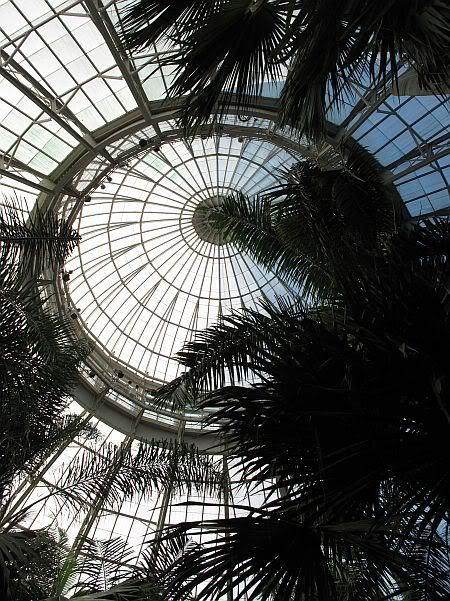
When you enter the House of Palms for The Holiday Train Show, after being greeted by helpful guides, dressed for the occasion.
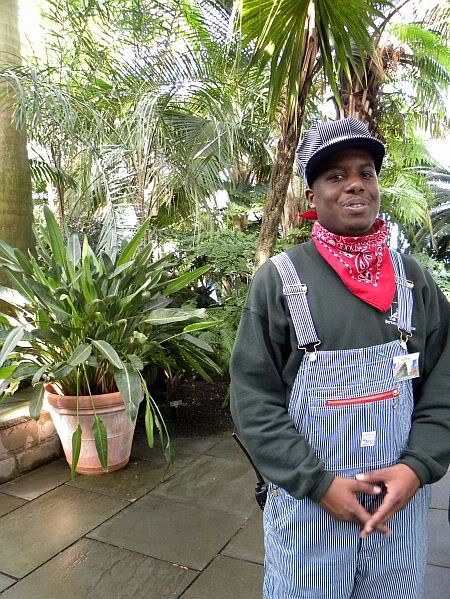
Down below the majestic palms, the pool has been transformed into the New York harbor, watched over by the Statue of Liberty.
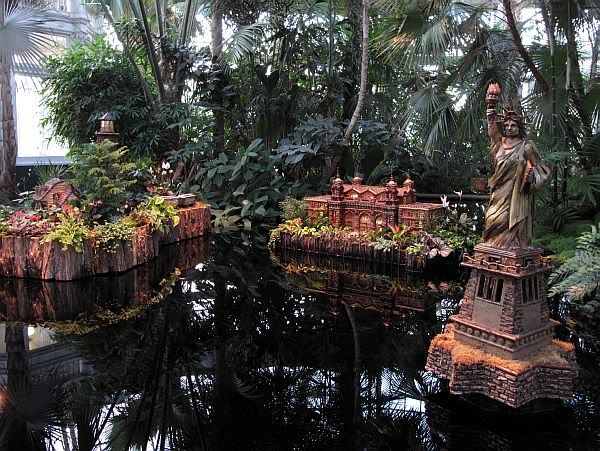
Ellis Island, a national monument of immigration in the evening light.

As you view the miniature New York harbor behind you back one model stands alone as an example of the construction of these tributes to natural art. Kykuit, the Hudson Vally landmark that is the Rockefeller Estate shows the creative use of tree bark, nuts, acorns, leaves, fruit and dried flowers.
How much nature can you identify in this little house on the Hudson? I think I see a shelf fungus as a balcony ledge.
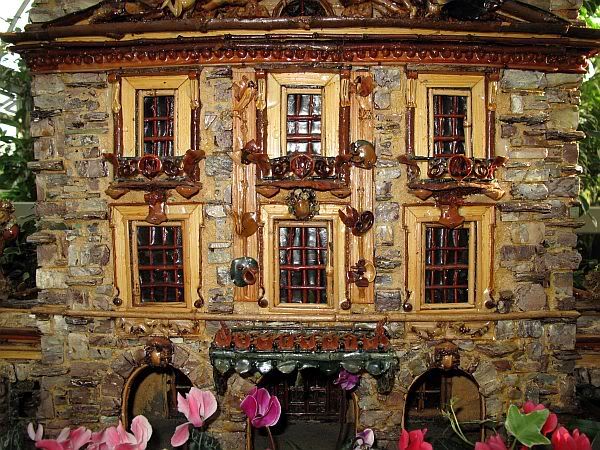
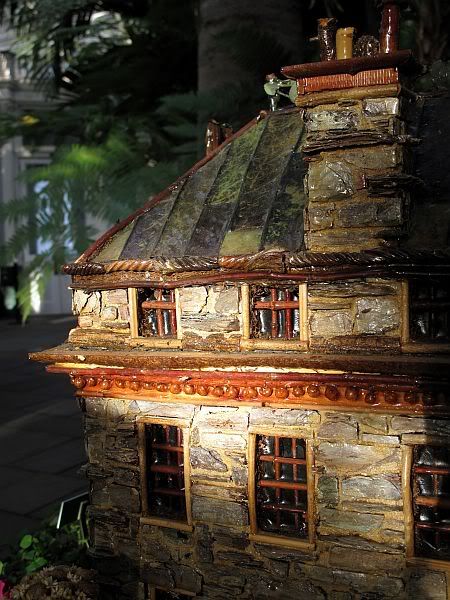

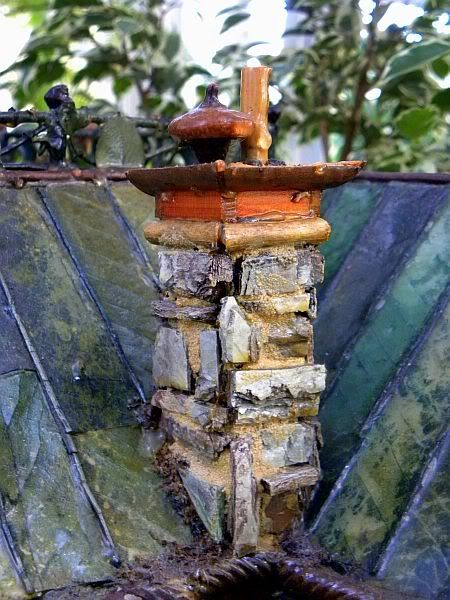
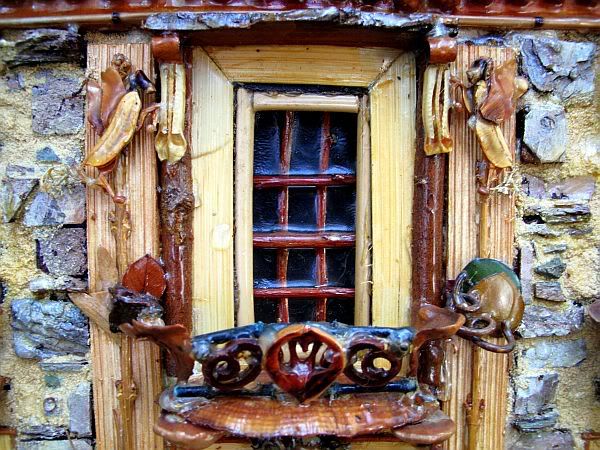
Walking around to the exhibition St. Patrick's Cathedral seems to be growing out of a tropical rain forest by day.
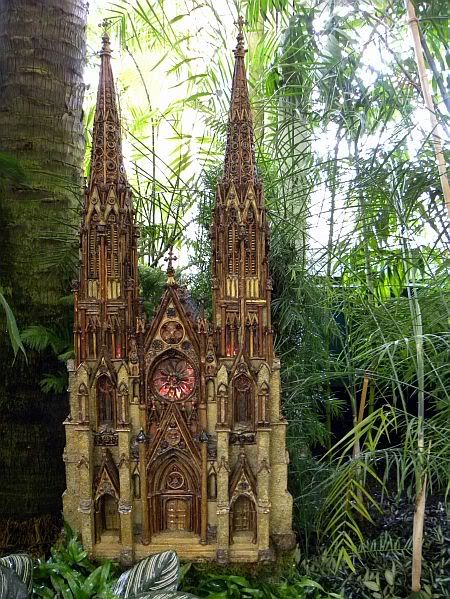
And at night the model looks more like St. Patrick's does in the usual Fifth Avenue setting.
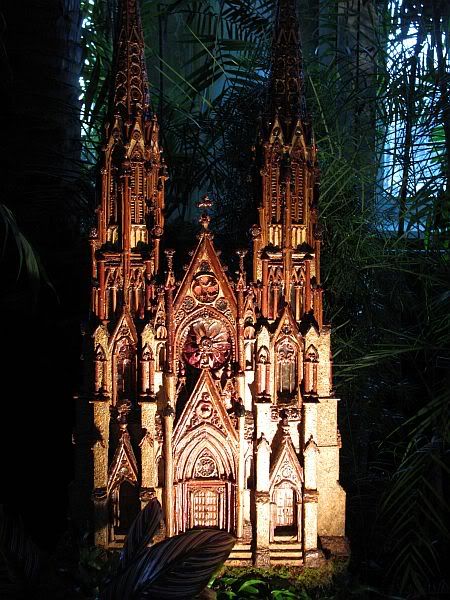
There is just one more view to be seen before entering The Holiday Train Show, the last home of Edgar Allen Poe is a Bronx landmark, the Poe Cottage still stands on the Grand Concourse just of Kingsbridge Road. The makers of this model had a little fun making the cottage more rustic than it really is.
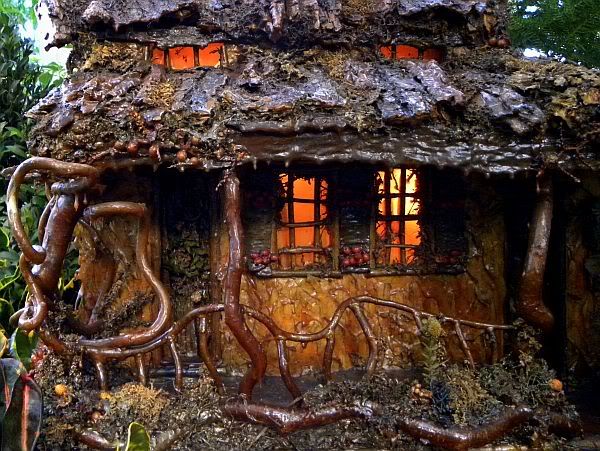
Then when you open the doors and see the sights of the first tubular glass gallery, all of the bridges of New York City made out of sticks with model trains of assorted scales running along the bridges brings out the child in almost everyone.
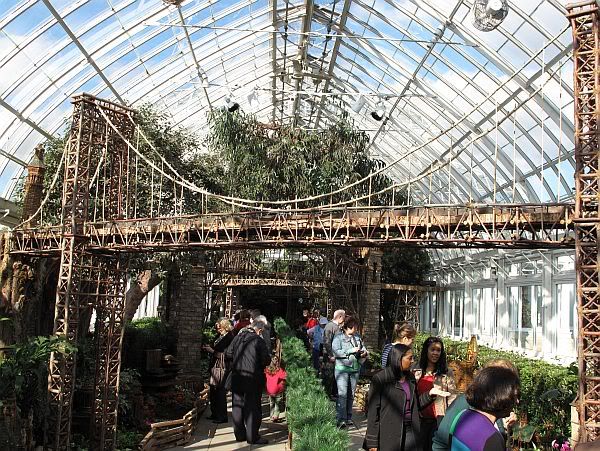
Notice that the Highbridge Water Tower is in about its proper place in relationship to the George Washington Bridge. This national historic landmark is rarely visited but often viewed by motorist.
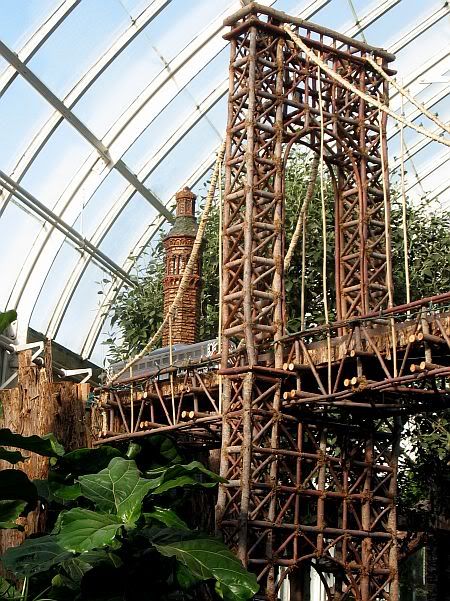
And behind the still standing stone viaduct that probably gave Highbridge Park its name and was once a footbridge for Bronx walkers to to the Manhattan park, you can see the remains of Kiku, the last Japanese Autumn in the New York Botanical Garden.
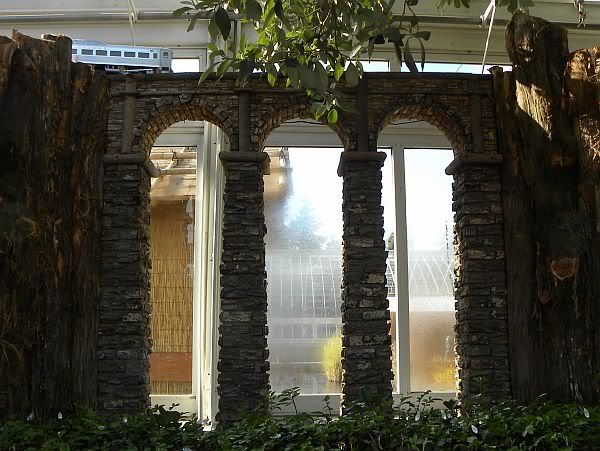
That's about it for proportionally correct in display relationships at the Holiday Train Show. This year the first views are Coney Island landmarks from days gone by.
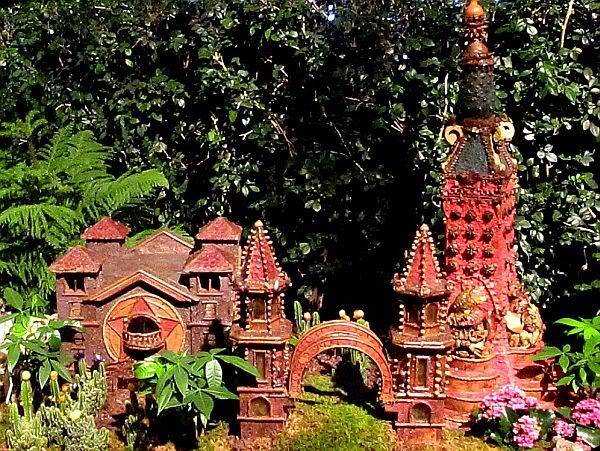
In the photo above, on the left is the The Galveston Flood Building where people were once entertained by a recreation of the deadly flood from 1900. On the right is the Tower of Light from the once great Luna Park that seemed to be the Coney Island answer to the Washington Monument. The center structure must be the Carnival of Lights entrance to Luna Park. Still no tiny Parachute Drop made of sticks and hopefully in some future year there will be a miniature Steeplechase Park to entertain the children of today.
Not all of the trains are the traditional Lionel or HO scale that collectors love. There are little oval shaped single car trains with insects on the roof and the children are so delighted at the sight of "the butterfly train." I heard a young girl squeal "Ladybug" delightfully as this little red train came through the Washington Square Park monument.
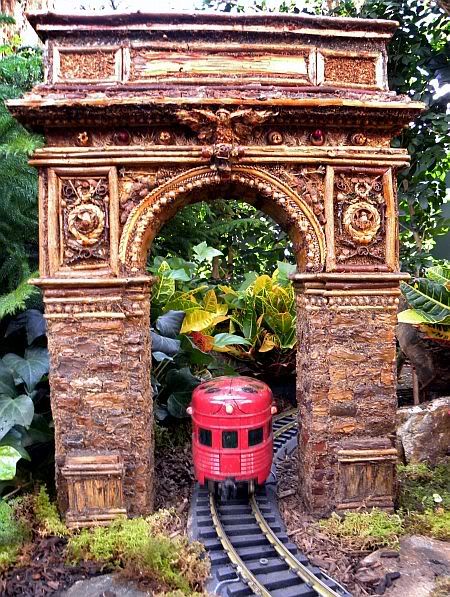
This is the Eighteenth Holiday Train Show and with a few new attractions being added each year, the recreations are becoming almost as crowded as the city and state they are there to reflect. The trains now travel both above and beside city landmarks in the entrance gallery.


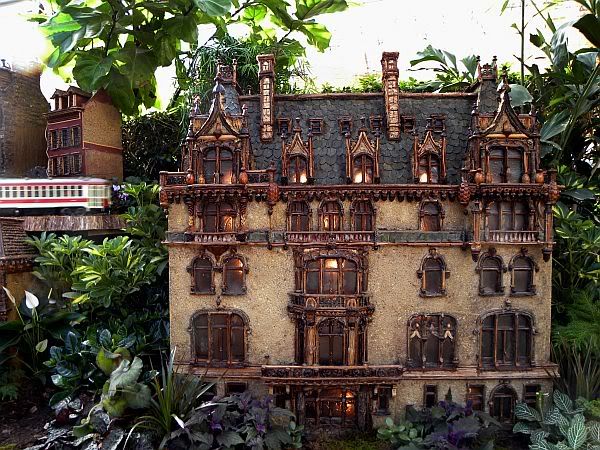
Two of my old favorites include a Guggenheim Museum made out of moss and fungi.
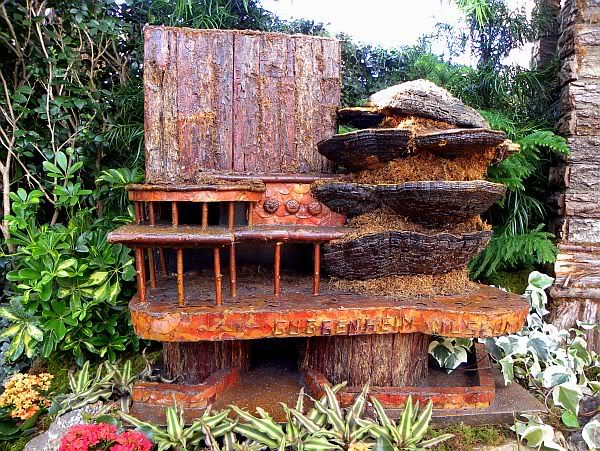
And the thrill of New York's famous stone lions, Patience and Fortitude guarding a miniature New York Public Library.
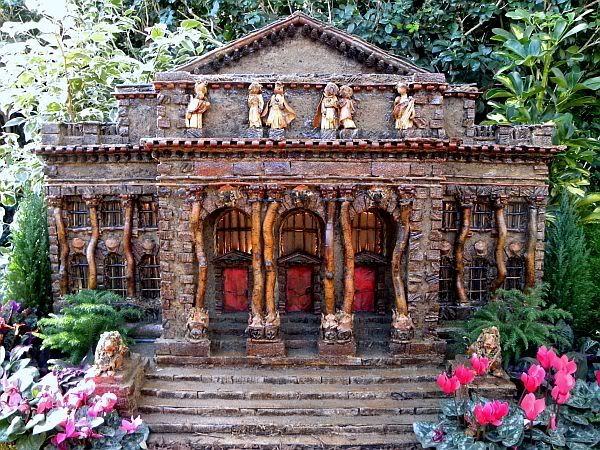
This year's new addition is already my favorite recreation of all time. In creating a reproduction of Pennsylvania Station Paul Busse and his team at Applied Imagination in Alexandria, Kentucky used a larger scale and recaptured some New York history.
Six artists on Mr. Busse’s team have constructed his meticulously detailed replica of the building, which when it was built at West 34th Street and Eighth Avenue nearly a century ago, was greatly lauded for its Beaux Arts architecture. In his design of the replica, Mr. Busse scaled down the original Penn Station’s approximate eight-acre span to be about 20 square feet—and to fit into the Conservatory, which itself houses an acre of plants under glass. The elaborate botanical interpretation even features Penn Station’s “Grand Concourse”, set two feet above the replica’s street level, and a cutaway view to the train tracks beneath the station with a shuttling passenger train.
In the Holiday Train Show version of Penn Station, botanical building materials visitors will spy include columns made of honeysuckle, façade trim of sea grape leaves, peppercorns, viburnum, willow, and oak bark, and railings of screw pod, burning bush, willow, and acorn caps. The roof is magnolia and pine cone scales and the sky lights are burning bush and basket reed. The adorning eagles have white pine cone bodies, hemlock clove feet, magnolia bud feathers and acorn cap wings. The clocks are birch bark and wheat seeds and the statues have pistachio bodies and cedrela wings.
I have no idea how impressed a child might be over seeing Pennsylvania Station for the first time but I am so thrilled to see the great building once again.
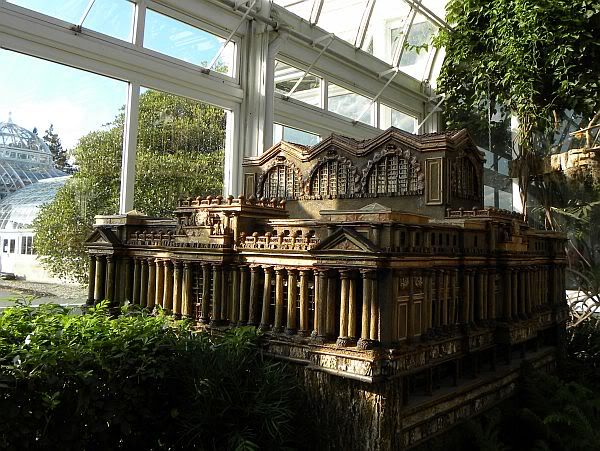
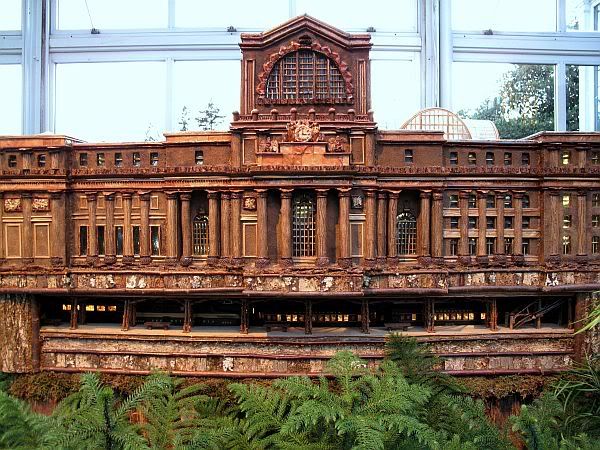

Pennsylvania Station is billed as New York’s first architectural martyr or the landmark that died so that others may live. “The Penn” was designed by McKim, Mead & White and constructed back in 1910. As one of the greatest engineering and architectural feats of the early 20th century, this civic landmark was love at first sight for New Yorkers and visitors from around the world. The controversial demolition of that great building 46 years ago was to make way for a fourth Madison Square Garden. That demolition is considered by many as the reason that the Landmark Preservation Commission began.
The model trains appropriately do not run through the station but sit idle at the eye level of small children, where they can see what once was.
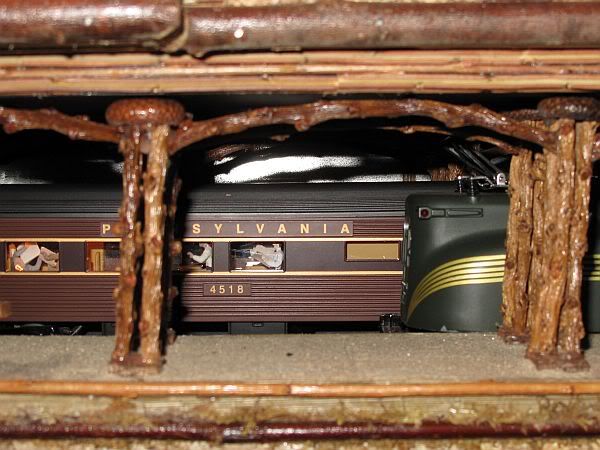
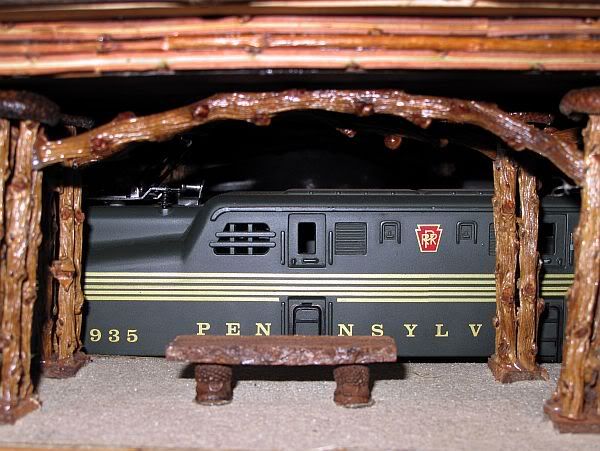
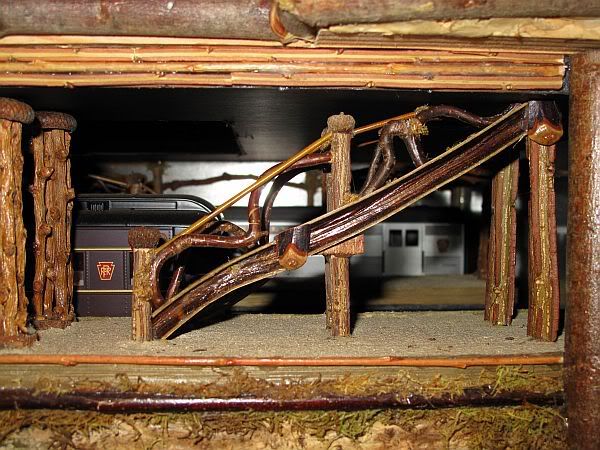
Entering the square glass galley where there is more room for fantasy villages and city views.
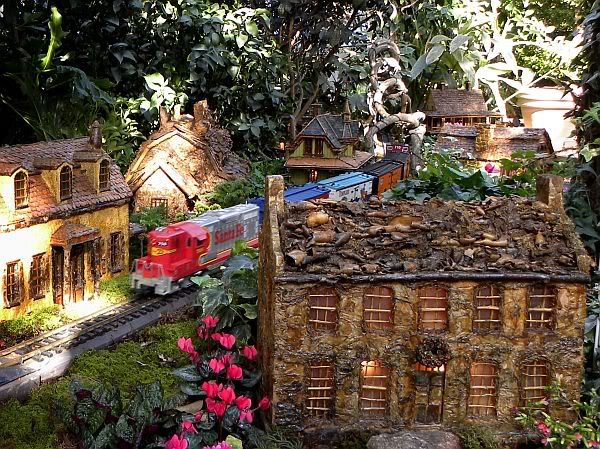
Grand Central Terminal is dwarfed by the new Pennsylvania Station. This year Grand Central has been tossed under the bridge.
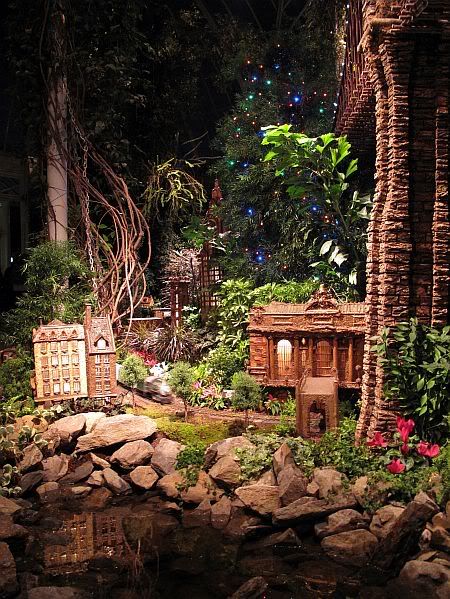
The Brooklyn Bridge.
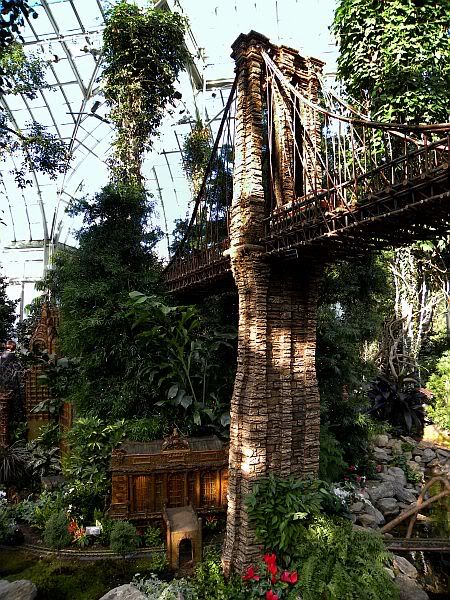
But then the trains still run through Grand Central.
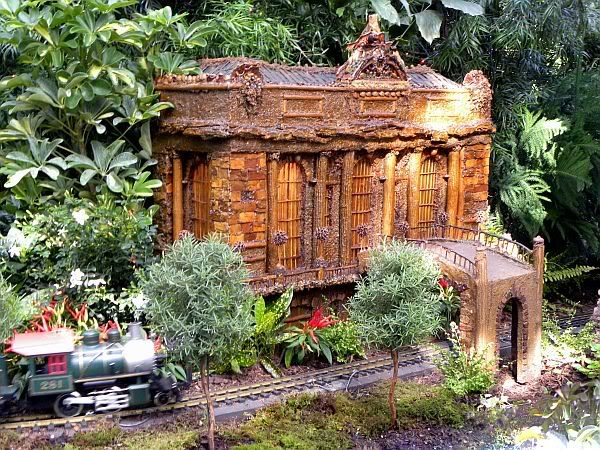
Here's a lovely train station. Bedford Hills is where people go for Stepping Stones and is also very close to where President Bill and Secretary of State Hillery Clinton go when they have the rare chance to go home.
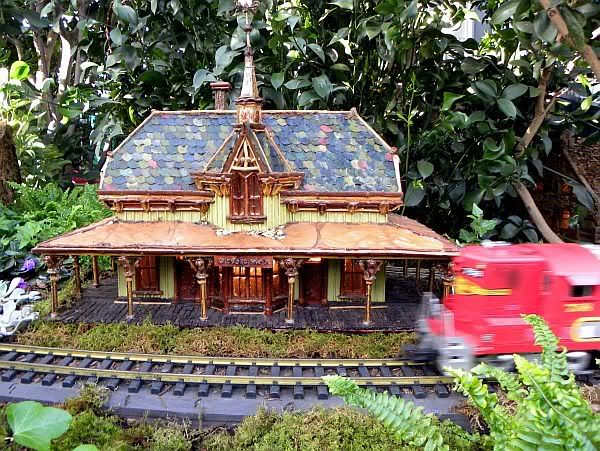
Here is the Yankee Train passing by the Plaza Hotel and Saks Fifth Avenue.

There is much Yankee Pride in a Botanical Garden that is also located in the Bronx.
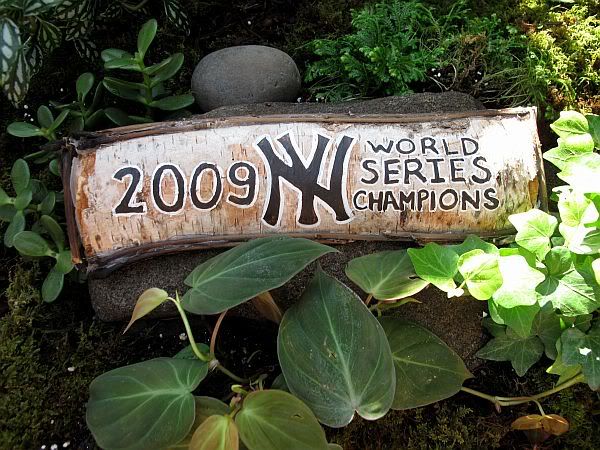

And the old stadium still stands in New York Botanical Garden, not the refurbish in the 1970's stadium but the original 1923 ball park. And just behind Yankee Stadium you can see City Hall.
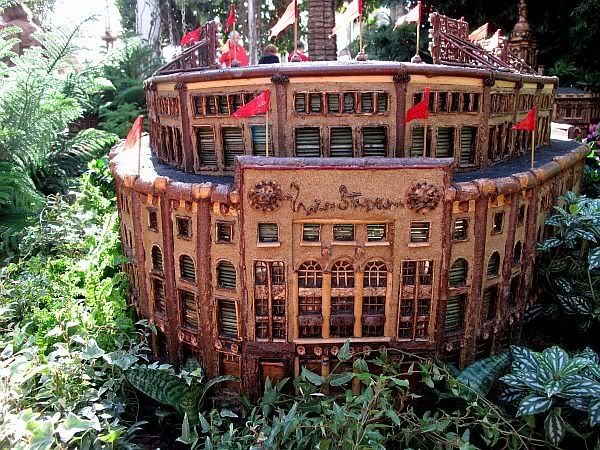
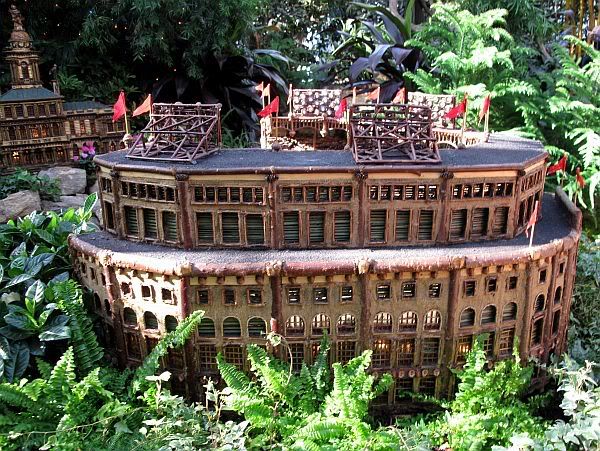
Here is another local landmark, from the other botanical garden in the Bronx, Wave Hill. This mansion is called The Wave Hill House.
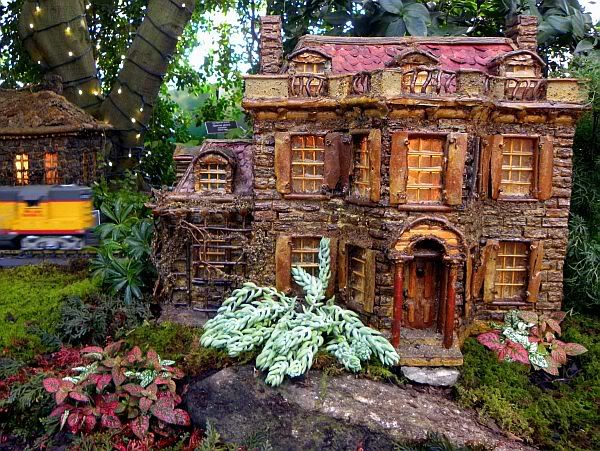
If houses could talk, the Wave Hill House would have many a story to tell. The list of residents that called this Bronx house home is long and distinguished. The nature of Wave Hill has inspired many. One of the owners, George W. Perkins was instrumental in preserving the Palisades across the river for many generations to enjoy, sunset photographers like myself included.
In the early days when the house was owned by William Henry Appleton, prominent scientist were often house guest. Riverdale streets are now named after former guest like Liebig, Tyndale and Huxley.
A publishing scion, Appleton brought to Wave Hill such pioneering natural scientists as Thomas Henry Huxley. Huxley was astounded by the site, declaring the Palisades across the river one of the world's greatest natural wonders.
Theodore Roosevelt's family rented Wave Hill during the summers of 1870 and ‘71, when the future president was a youth of 12 and 13. Teddy's time here significantly deepened his love of nature and love of the outdoors that would later prompt him to secure the preservation of millions of acres of American parkland.
Mark Twain leased the estate from 1901-1903, setting up a treehouse parlor in the branches of a chestnut tree on the lawn. Of winter at Wave Hill he wrote, I believe we have the noblest roaring blasts here I have ever known on land; they sing their hoarse song through the big tree-tops with a splendid energy that thrills me and stirs me and uplifts me and makes me want to live always.
Later Bashford Dean leased the house from George W. Perkins. Dean who was was an American zoologist, specializing in ichthyology, was a man of many passions. He is the only person to have held concurrent positions at the American Museum of Natural History and the Metropolitan Museum of Art. His hobby was collecting medieval European armor, and he built an Armor Hall in the Wave Hill House for his remarkable collection, that would eventually start the arms and armor collection of the Metropolitan Museum of Art.
Arturo Toscanini also lived there from 1942-45 and played free outdoor concerts on the grounds at Wave Hill. Since 1960 the house has been opened to the public.
Of course there is an all natural miniature version of the Enid A. Haupt Conservatory, that is wonderful to view both by day;
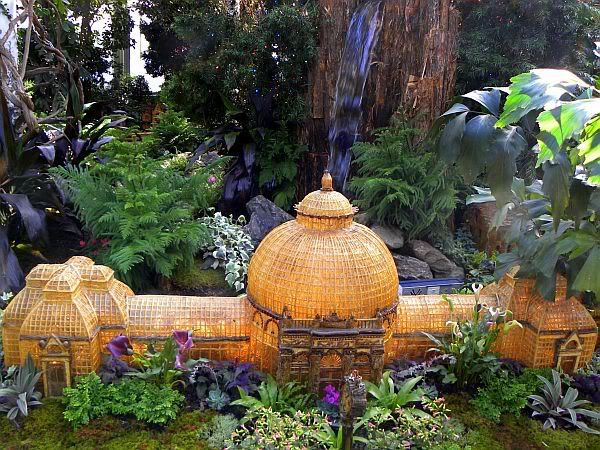
And at night;
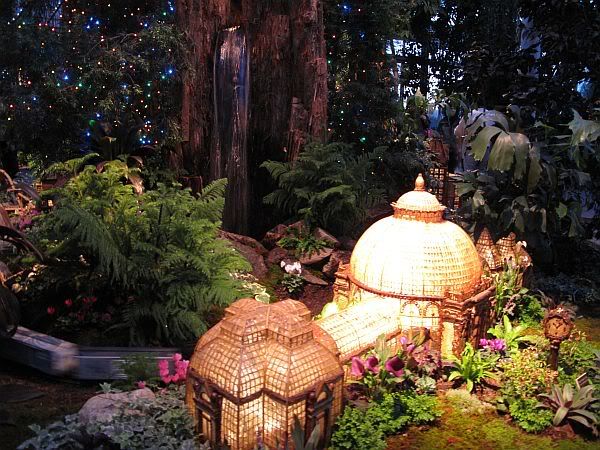
This year a newer garden landmark, the garden clock has moved to the entrance of the conservatory replica. Getting up close you can compare the attention to detail to the real thing because you are there.
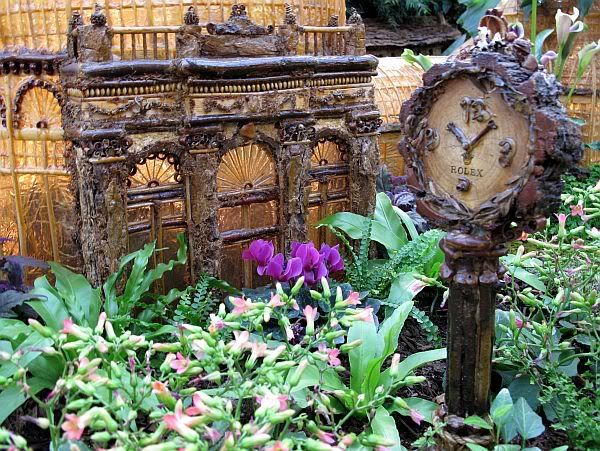
Another example of fine detail is Radio City Music Hall.
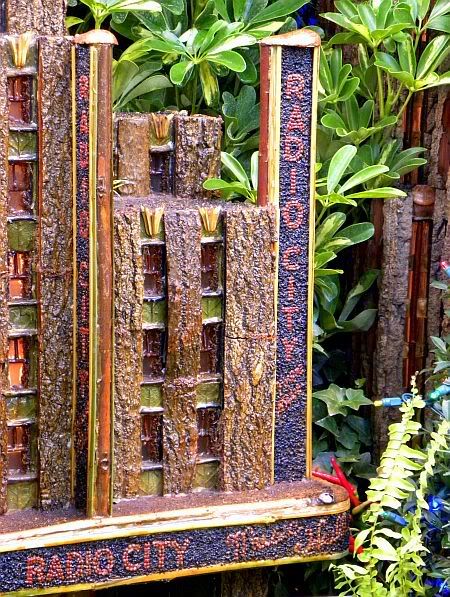
Take a look inside the Van Cortlandt Manor at night.
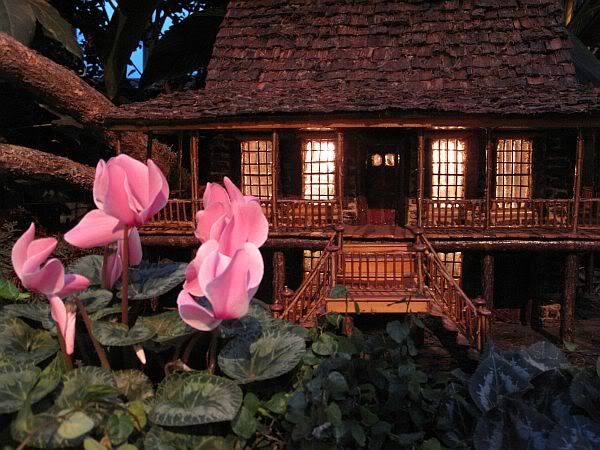
As you go back through the tubular gallery the first stop is a very interesting building. Most of the largest residences of yesteryear are on display but by far what appears to be the most opulent was the home of a United States Senator from Montana? William A. Clark did alright for himself.
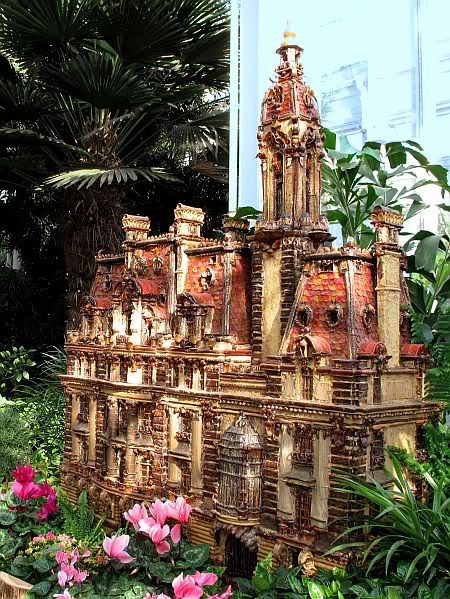
Here is the home where William K. Vanderbilt once lived. Well, Billy may have been no Cornelius but still his house seems sort of modest compared with that Montana senator.
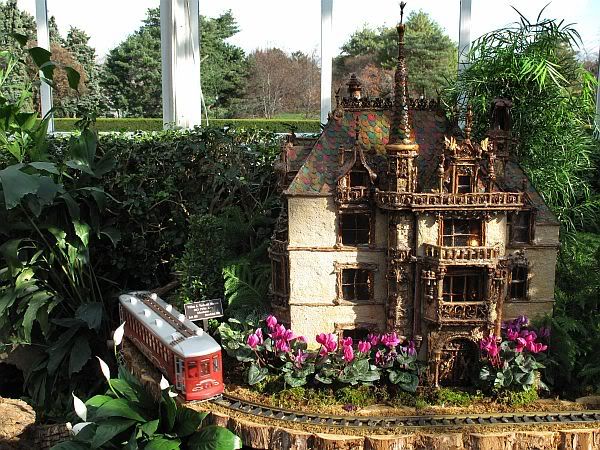
On the way out there is a fantasy Central Park with the butterfly train coming through.
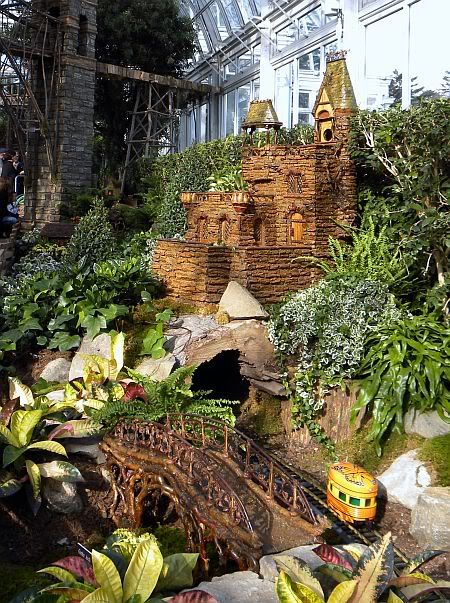
Below is a close up of the Gothic Bridge in the photo above, followed by the Belvedere Castle, the Rustic Shelter of the Ramble, the Dairy, and then the Swedish Cottage.
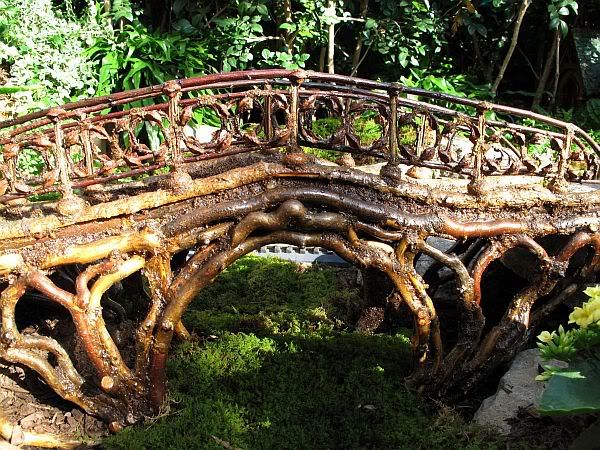
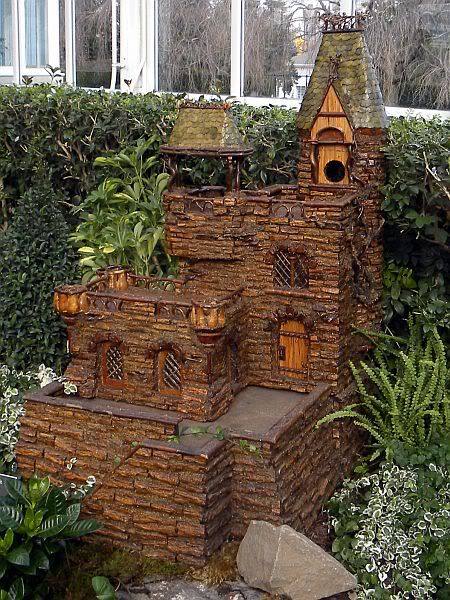
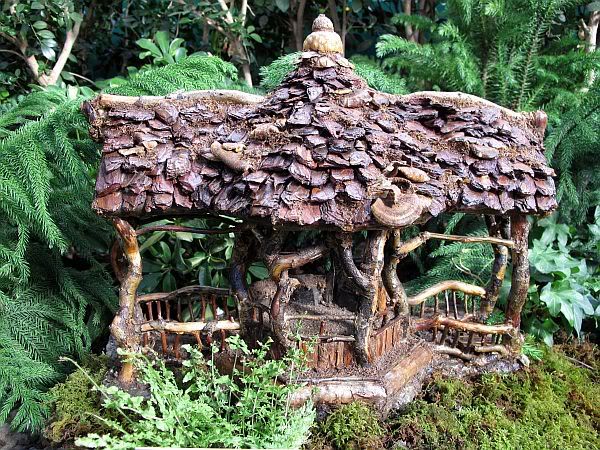
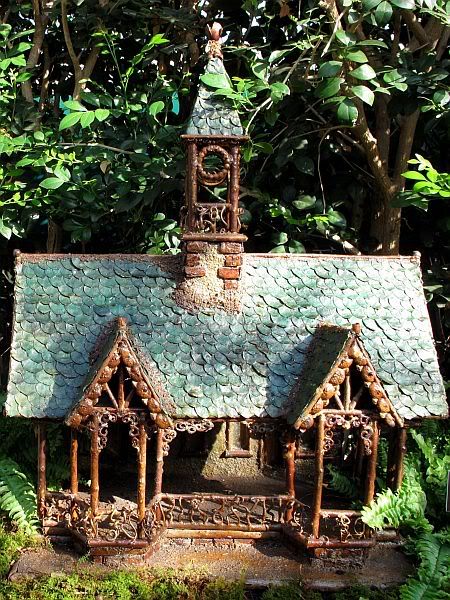
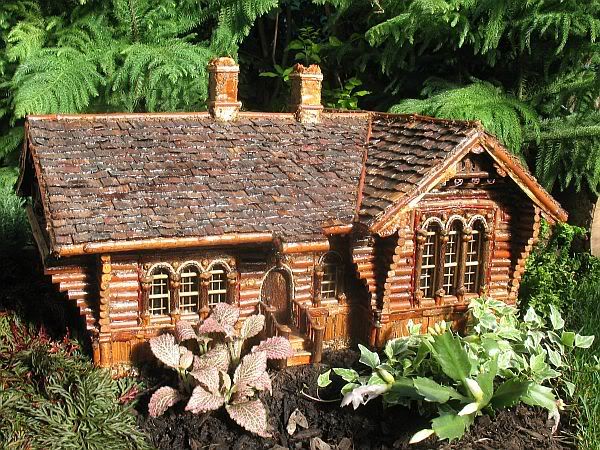
Close to the end, right where you would expect it, under the George Washington Bridge is the famous Little Red Lighthouse. The lighthouse by day...
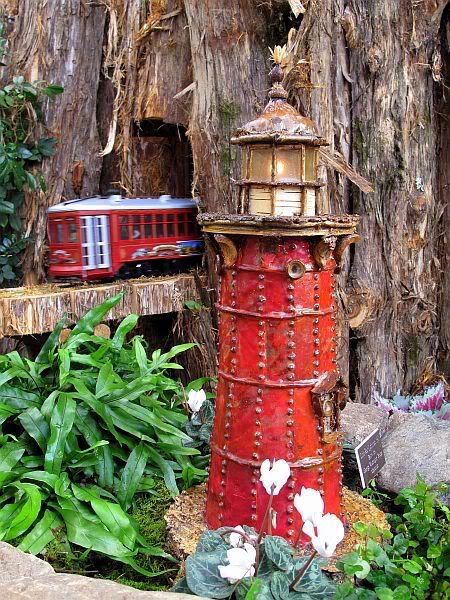
And later at night.

That the end of the line but here are a few night views. Looking back from the entrance.
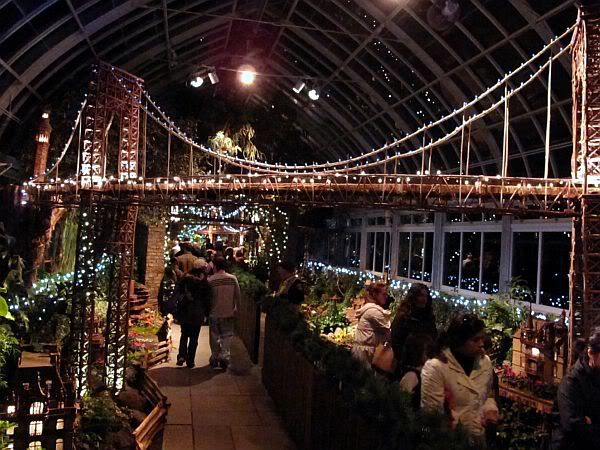
The view from City Hall.
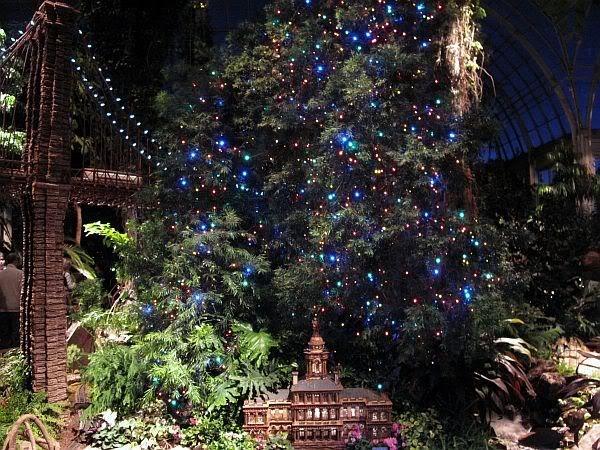
And the Main Event.
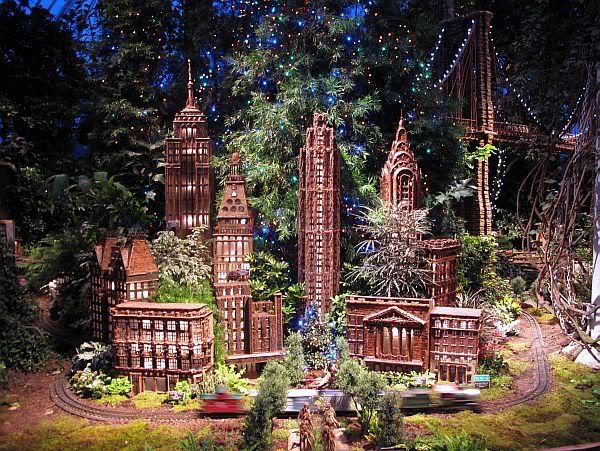
If you live in or near New York and you want to see this show you will probably need advanced tickets. Here's the link. You have until January 10 and becoming a member doesn't cost much more.
Happy Thanksgiving and Happy Holidays.
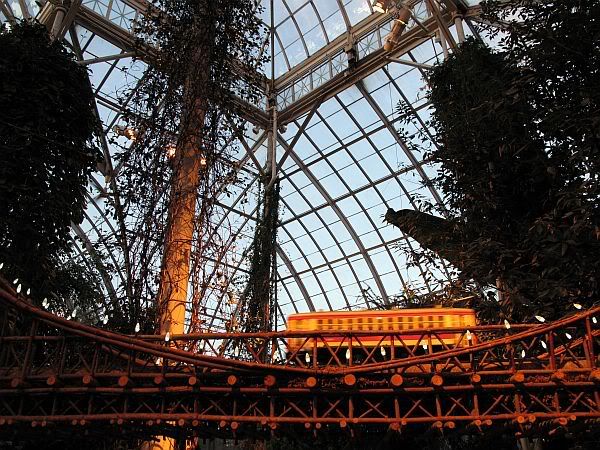
No comments:
Post a Comment